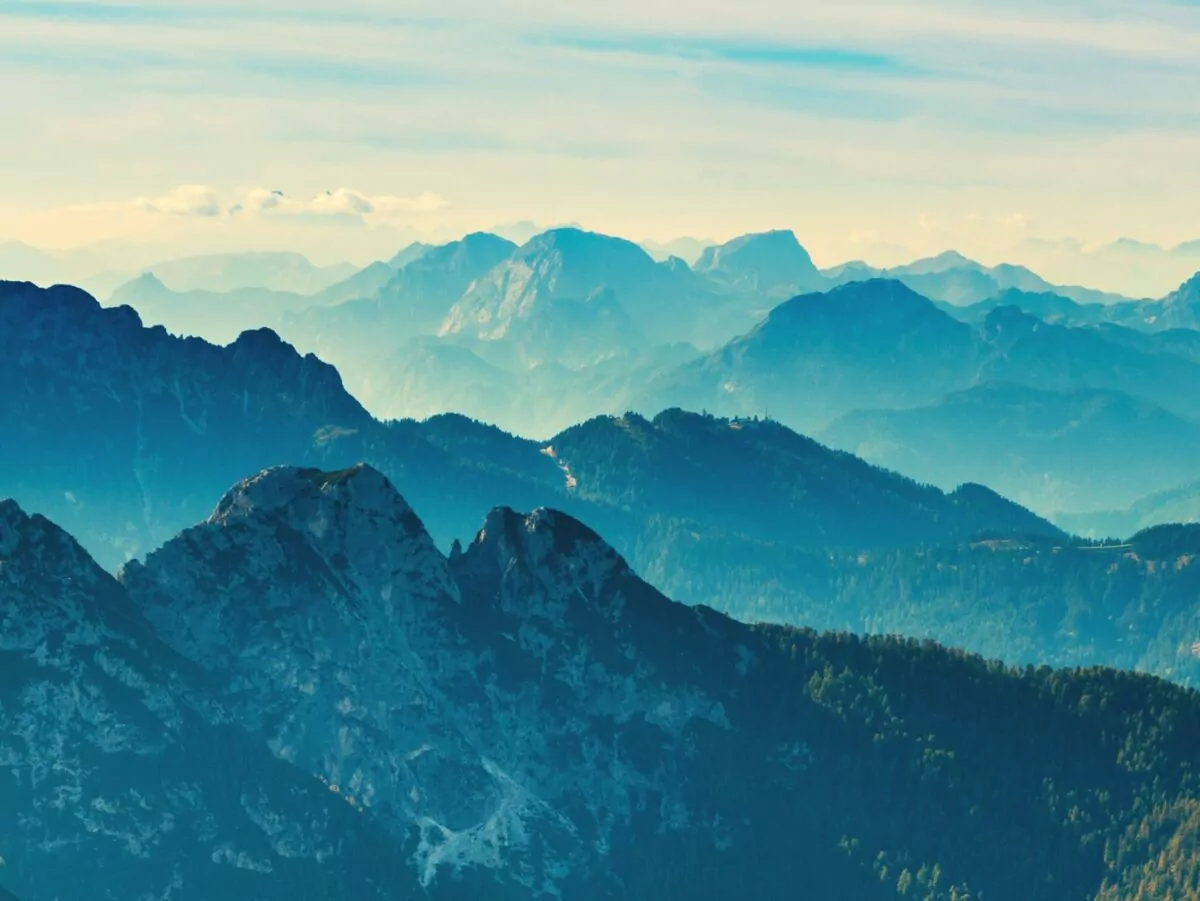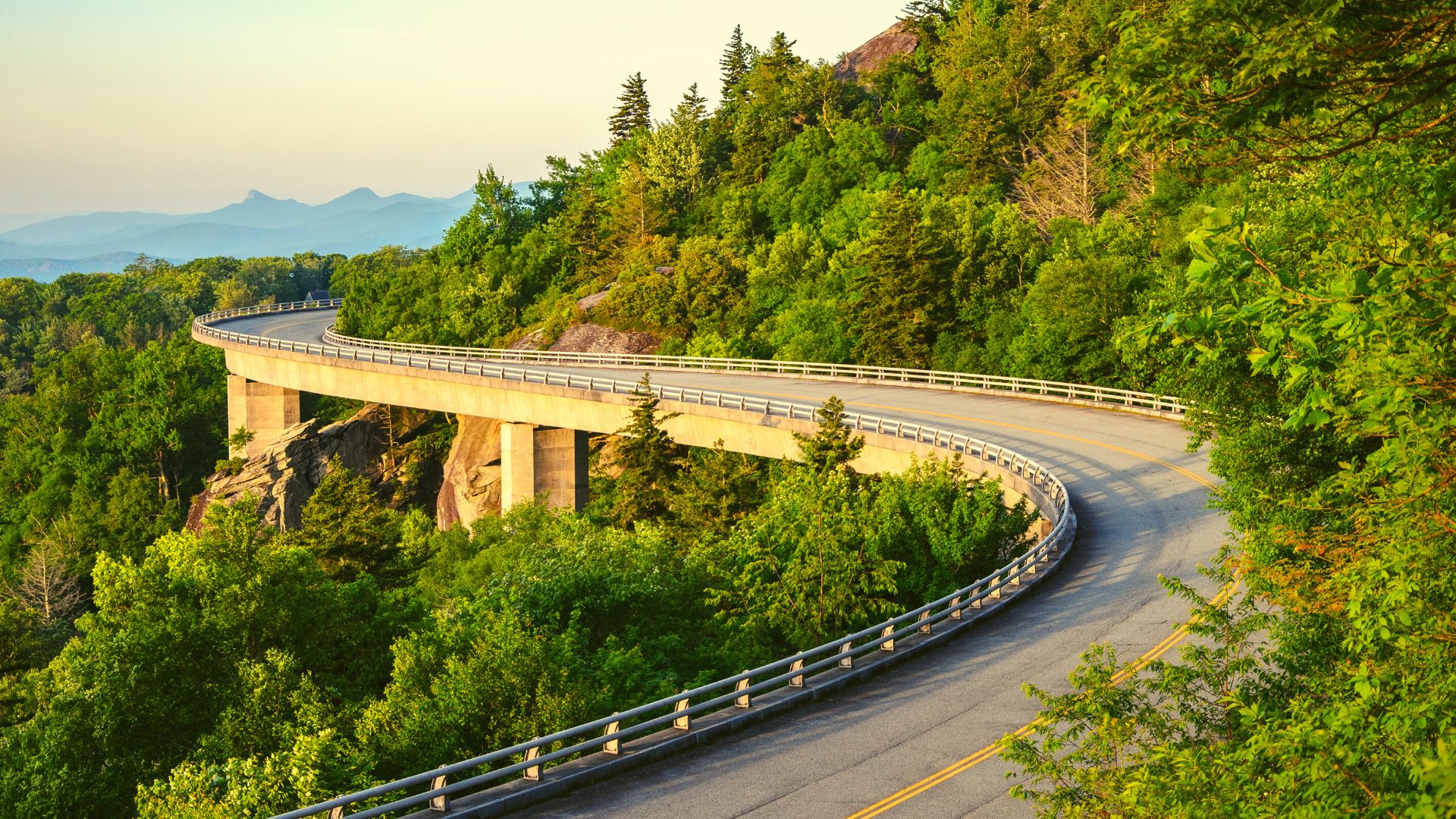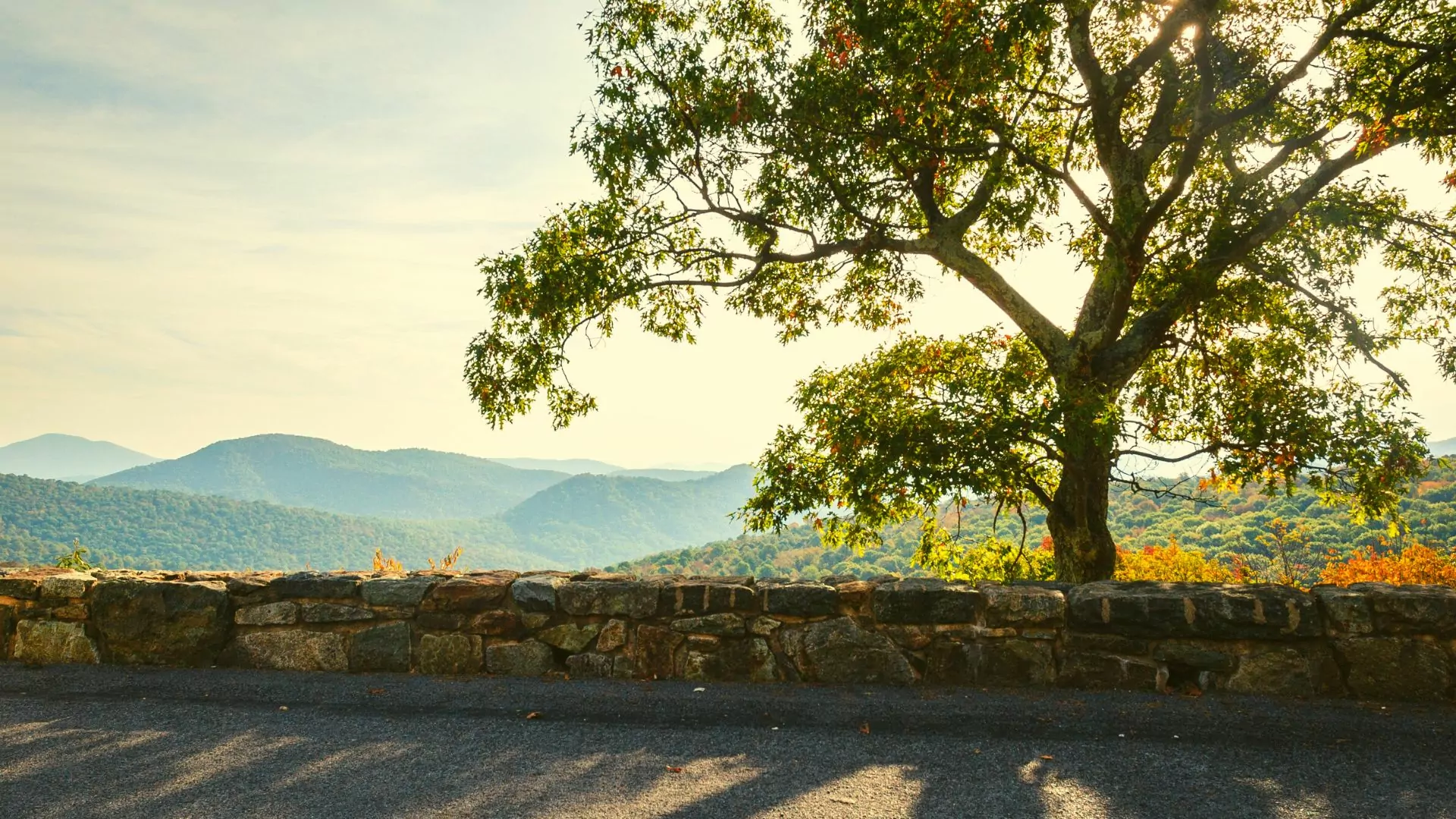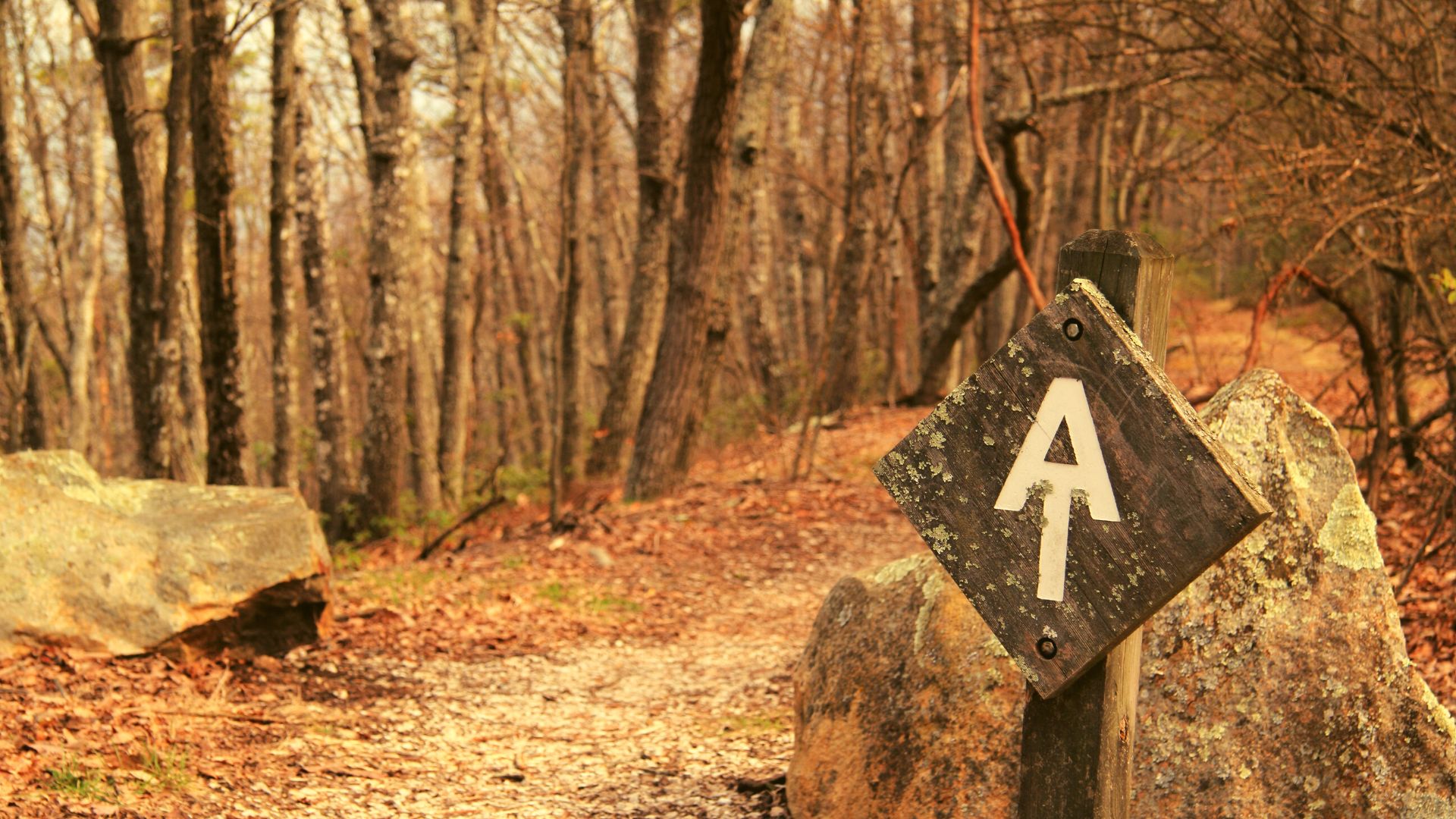Visiting the Blue Ridge Mountains

The Blue Ridge Mountains are a natural wonder, offering an abundance of outdoor activities and breathtaking landscapes for nature enthusiasts and adventure seekers. This expansive mountain range, part of the larger Appalachian Mountains, spans across several states in the eastern United States, including Virginia, North Carolina, Tennessee, Maryland, and Georgia. Known for its blue hues and dense forests, the Blue Ridge Mountains offer visitors opportunities to experience diverse wildlife and charming communities. We will provide you with everything you need to know about visiting the Blue Ridge Mountains, from the famous Blue Ridge Parkway to the majestic Shenandoah National Park and the legendary Appalachian Trail.
Blue Ridge Mountains
Stretching across the eastern United States, the Blue Ridge Mountains’ natural beauty characterizes the region, coupled with its rich wildlife. These ancient mountains are famous for their distinctive blue appearance, caused by the release of volatile organic compounds from the forests that blanket the landscape. Exploring the Blue Ridge Mountains offers a wide range of outdoor activities, including hiking, camping, fishing, and wildlife viewing. The region’s forests and diverse ecosystems provide a haven for countless plant and animal species, making it a paradise for nature lovers.
Fun fact! The Appalachian Mountains, home to the Blue Ridge Mountains, is one of the oldest mountain chains in the world! The Scottish Highlands are part of the same mountain range, and there is a split in the mountain chain at a trench in the Atlantic Ocean, which moves the mountains further northeast of the trench. You can find canyons in the Blue Ridge Mountains older than any in the Western US, due to the age of the range.
The Blue Ridge Parkway
The Blue Ridge Parkway is a scenic road that winds its way through the heart of the Blue Ridge Mountains. Often hailed as “America’s Favorite Drive,” this iconic route spans 469 miles, connecting Shenandoah National Park in Virginia to Great Smoky Mountains National Park in North Carolina and Tennessee. Driving along the Blue Ridge Parkway is a captivating experience, offering views of the surrounding mountains, valleys, and forests. The parkway is dotted with numerous overlooks, each providing a perspective of the diverse landscapes. As you journey along this scenic route, you’ll have the opportunity to explore charming communities, visit historical sites, and explore outdoor recreational activities.
One of my favorite overlooks on the Parkway is the Looking Glass Overlook. Located in North Carolina, Looking Glass Rock is a large granite peak that thrusts itself from the earth. A sheer granite face is exposed, in a shape that someone thought looked like a looking glass. From this same overlook, you can see miles of the Blue Ridge Mountains stretching in any direction. The view of Looking Glass Rock is unparalleled – it’s a mountain peak easy to distinguish from the others around it, due to the exposed granite of its rock face. The viewpoint is the perfect embodiment of green earth and blue sky – it’s a sight that shouldn’t be missed!
The Blue Ridge Parkway winds through and by several towns in North Carolina and Virginia. The Parkway passes just outside of Asheville, North Carolina. This makes Asheville the ideal city to access the Parkway, as well as the Smoky and Blue Ridge Mountains. There are amazing National Monuments and small towns that scattered along the Parkway in the Asheville area. Asheville, North Carolina has become a popular travel destination and should definitely be added to your list.
Another must-visit town is Boone, North Carolina. Boone is a hub for outdoor enthusiasts, offering opportunities for hiking, skiing, and exploring. Blowing Rock, also in North Carolina, is a quaint town with a charming downtown area and the famous Blowing Rock itself, a natural rock formation that provides views of the surrounding mountains. Moving into Virginia, the town of Roanoke stands out with its rich history, lively arts community, and the iconic Mill Mountain Star, a gigantic illuminated star overlooking the city. Finally, Floyd, Virginia, captivates visitors with its small-town charm, hosting a vibrant music and arts scene, and its renowned Friday Night Jamboree, where locals and tourists gather for live bluegrass and old-time music. Whether it’s the arts, outdoor adventures, or local culture, these towns along the Blue Ridge Parkway offer a mix of attractions and experiences for travelers to enjoy.
If you’re plan a hike off the Blue Ridge Parkway, you have some great options. A few favorites influce the Crabtree Falls Trail (Virginia), Linville Falls Trail (North Carolina), Humpback Rocks Trail (Virginia), and Craggy Gardens (North Carolina). Waterfalls are a big draw on each of these easy hikes and each trail is conveniently accessible from the parkway. There are more named trails in the National Parks that the Parkway drives through, but these trails outside of the parks give you an opportunity to experience the nature of the area without the crowds that National Parks can create.
Amazing Facts about the Blue Ridge Mountains
The Blue Ridge mountains are amazing in their own right, and feature some pretty amazing facts that make them so unique.
For example, the highest peak east of the Mississippi River in the US is Mount Mitchell in the Blue Ridge Mountains. It reaches a point of 6,684 feet and is a very popular hiking option for adventurers in the area. There are 125 peaks in the Blue Ridge Mountains that are over 5,000 feet – a noteworthy elevation for the east coast! The Blue Ridge Mountains are also known for their incredible biodiversity, with over 19,000 species unique to the region. Some of these species and plants help create that ‘blue hue’ which give the Blue Ridge its namesake. The Blue Ridge is also home to the most visited National Park in the US – the Great Smoky Mountains. Great Smoky Mountains sees close to 12 million visitors a year; that’s double the amount of visitors from the next most visited National Park, the Grand Canyon, which sees close to 6 million a year.
Shenandoah National Park
Situated in the northern region of the Blue Ridge Mountains, Shenandoah National Park acts as a starting or end point for the Blue Ridge Parkway. Encompassing over 200,000 acres, this pristine wilderness offers a haven of natural beauty. The park boasts panoramic vistas, cascading waterfalls, and an abundance of wildlife. A highlight of Shenandoah National Park is the famous Skyline Drive, a scenic road that traverses the length of the park. Along this route, you can find numerous overlooks, hiking trails, and picnic areas.. Whether you prefer a leisurely drive or an adventurous hike, Shenandoah National Park offers something for everyone.
Things to do in Shenandoah National Park
Shenandoah National Park is a playground for outdoor enthusiasts, offering a multitude of recreational activities. Hikers can explore over 500 miles of trails, ranging from easy strolls to challenging treks. The Appalachian Trail passes through the park, offering hikers an unforgettable experience. For those seeking a different perspective, the park’s rivers are perfect for canoeing, kayaking, or fishing. Visitors can also embark on scenic drives, cycle along the Skyline Drive, or partake in horseback riding amidst the park’s enchanting landscapes. Camping facilities are also available, allowing visitors to experience the park overnight.
One of my favorite hikes in Shenandoah is the Old Rag Trail. This hike takes you to the top of a mountain peak, in one of the highest parts of the Blue Ridge Mountains, and offers views of the stretching mountainous landscape. Water pools on the top also attract most of the wildlife you would expect to see in this part of the southeast, namely black bears and deer. Make sure when you are in the park that you hike this strenuous but rewarding trail!
Beyond its natural wonders, Shenandoah National Park also boasts a rich heritage. Visitors can explore historical sites, including prehistoric Native American archaeological sites and remnants of early European settlements. The park also features rustic cabins and lodges built by the Civilian Conservation Corps in the 1930s. The Byrd Visitor Center provides informative exhibits that delve into the park’s history, ecology, and conservation efforts.
Amazing Facts about Shenandoah National Park
Shenandoah National Park is a true American gem, being close to Washington DC but far enough away that it retains a seclusive natural beauty. It should definitely be on your list if you’re visiting the Blue Ridge Mountains. To entice you further, here are some amazing facts about the park that demonstrate its unique status.
Shenandoah National Park is home to the Skyline Drive, a scenic road that stretches for 105 miles along the crest of the mountains. This iconic drive offers breathtaking vistas of the surrounding valleys, forests, and peaks, attracting visitors from far and wide. The park is home to over 200 species of birds, including the elusive and endangered peregrine falcon. Wildlife enthusiasts can also spot black bears, deer, wild turkeys, and a variety of reptiles and amphibians as they explore the park’s trails and meadows.
Shenandoah National Park is renowned for its stunning waterfalls, with over 70 cascades spread throughout the park. One of the most popular waterfalls is the 93-foot tall Overall Run Falls, making it the tallest waterfall in the park. These captivating falls provide an ideal setting for visitors to immerse themselves in the beauty of nature.
Shenandoah National Park is steeped in history, particularly the history of its early settlers. The park preserves remnants of the Appalachian mountain culture and showcases historic structures, such as cabins and farmsteads, which offer a glimpse into the past.
Lastly, stargazers are in for a treat in Shenandoah National Park, as it has been designated as an International Dark Sky Park. With limited light pollution, the park provides optimal conditions for observing the night sky, including mesmerizing views of constellations, shooting stars, and the Milky Way.
The Appalachian Trail
The Blue Ridge Parkway serves as a gateway to the legendary Appalachian Trail, one of the world’s most renowned long-distance hiking trails. Extending almost 2,200 miles, the Appalachian Trail winds its way through the heart of the Blue Ridge Mountains, passing through various states such as Virginia, North Carolina, and Tennessee. Hiking a section of the Appalachian Trail is an extraordinary experience, allowing you to immerse yourself in the untamed beauty of the Blue Ridge Mountains. Whether you embark on a day hike or challenge yourself to a thru-hike spanning several months, the Appalachian Trail offers a unique opportunity to connect with nature and test your limits.
The trail begins in the southern state of Georgia at Springer Mountain, a popular starting point for many hikers. From there, it winds its way through 14 states before reaching its northern terminus at Mount Katahdin in Maine. As hikers embark on their journey, they will encounter a series of breathtaking landscapes and natural wonders that showcase the beauty of each state:
Georgia welcomes hikers with a warm climate and stunning vistas. The trail meanders through the tops of mountains and alongside several creeks that dot the area. Entering North Carolina, hikers are greeted by the majestic Great Smoky Mountains. This section of the trail is known for its challenging terrain and stunning panoramic views, making it a highlight for many adventurers.
Crossing into Tennessee, the Appalachian Trail continues through the rugged beauty of the Great Smoky Mountains National Park. Hikers can revel in the splendor of old-growth forests and enjoy encounters with diverse wildlife. Virginia holds the longest stretch of the Appalachian Trail, covering approximately 550 miles. This section treats hikers to a mix of open meadows, dense forests, and mountain landscapes. It also passes through the iconic McAfee Knob, offering one of the most photographed views on the entire trail.
The Appalachian Trail portions in the Blue Ridge Mountains offer the best solitude of the trail. Nearby towns that are found near the trail will be rich in their culture and heritage as hikers pass by. The views do not get old with the rolling mountain vistas every time you crest a peak.
Amazing Facts about the Appalachian Trail
The Appalachian Trail is as legendary as the Blue Ridge Mountains, Parkway, and surrounding National Parks. They all blend together to create one of the most unique regions in the US, and it’s no wonder why this part of the country is one of the most visited destinations for domestic travelers.
The Appalachian Trail, often referred to as the AT, stretches close to 2,200 miles from Georgia to Maine, making it one of the longest hiking trails in the world. Its remarkable span covers 14 states.
The Appalachian Trail has a rich history that dates back to the early 20th century. It was conceived by Benton MacKaye, who envisioned a trail that would connect people with nature and offer an escape from the fast-paced urban lifestyle. Construction of the trail began in 1921 and was completed in 1937. Since then, it has become an iconic symbol of outdoor adventure and a testament to the perseverance of countless volunteers who have maintained and protected its path.
The Appalachian Trail is a haven for wildlife, hosting a diverse array of animal species. Hikers may encounter black bears, white-tailed deer, moose, bobcats, foxes, and a variety of bird species along their journey. The trail’s protected status and the surrounding wilderness provide an essential habitat for these creatures, allowing visitors to witness the beauty of nature up close.
The AT presents hikers with a wide range of terrains and challenges. From steep ascents and descents in the White Mountains of New Hampshire to rocky sections in Pennsylvania and technical trails in the Smoky Mountains – the trail tests the physical and mental endurance of those who embark on the journey. The rugged terrain also rewards hikers with stunning vistas and a sense of accomplishment as they conquer each section.
The Appalachian Trail fosters a unique sense of community among hikers. Along the trail, hikers often form deep connections and share a sense of camaraderie. Trail towns, located near the AT, provide opportunities for resupplying, resting, and connecting with fellow hikers. The supportive network of trail angels, hostel owners, and fellow adventurers creates a vibrant and welcoming community that adds to the trail’s magic.
Why Visit the Blue Ridge
The Blue Ridge Mountains offer an opportunity to immerse oneself in the breathtaking beauty of nature. With a variety of access points, such as the Blue Ridge Parkway, Shenandoah National Park, and the Appalachian Trail, exploring these mountains has never been easier. Whether you prefer scenic drives along the parkway, invigorating hikes through the national park, or embarking on the legendary Appalachian Trail, the Blue Ridge Mountains provide endless possibilities for adventure and discovery. Ensure you have the best experience by checking out our tours in the Blue Ridge and Appalachian Trail areas, including the Smoky Mountains and trails throughout Vermont. Wildland Trekking has created new tours in these areas and the experience is nothing less than exceptional.







